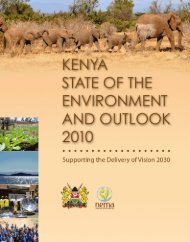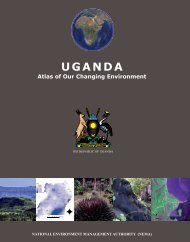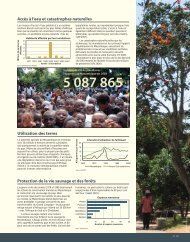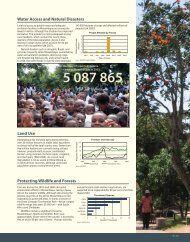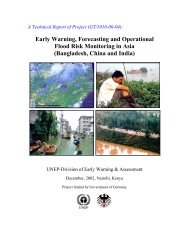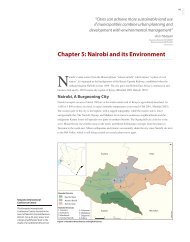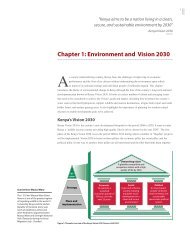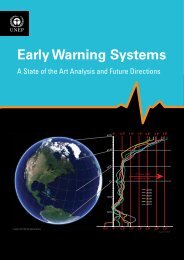Download
Download
Download
Create successful ePaper yourself
Turn your PDF publications into a flip-book with our unique Google optimized e-Paper software.
2 North America’s Environment<br />
Socio-economic Dynamics and the Environment<br />
he last three decades of the<br />
20th T<br />
century brought increasing<br />
affluence and power to<br />
North America. North Americans<br />
not only live long lives in increasingly<br />
diverse societies, their production<br />
of material wealth and consumption<br />
of goods rank among the<br />
highest in the world. North American<br />
capital, technology, goods, and<br />
ideals are fueling globalization, a<br />
defining trend of the new<br />
millennium that carries both<br />
unprecedented risks and<br />
extraordinary opportunities.<br />
Human Development<br />
As a region, human development in<br />
North America has generally improved<br />
over the last 25 years, and<br />
the region probably enjoys the<br />
highest level of human development<br />
in the world. With Canada ranked<br />
third and the United States sixth on<br />
the Human Development Index<br />
(HDI) in 2001, the region has an<br />
average HDI value of 0.935, compared<br />
to 0.928 for the high-income<br />
OECD countries (UNDP 2001).<br />
Despite the overall promising<br />
picture of human development,<br />
poverty is not unknown in North<br />
America. In general, poverty rates<br />
over the last decade in the United<br />
States have been declining, while in<br />
Canada they have been rising.<br />
Although debates about the definition,<br />
measurement, and thus extent<br />
of poverty continue, data clearly<br />
show that some social groups are<br />
more vulnerable than others. Poverty<br />
is more likely to affect aboriginal<br />
people, visible minorities, and single<br />
parents (Ross, Scott, and Smith<br />
2000; Dalaker 2001).<br />
Demographics<br />
In contrast with other countries in<br />
the industrialized world, particularly<br />
those in Europe, population growth<br />
continues, and growth rates have<br />
stayed constant at about 1.0 percent<br />
over the last three decades (UN<br />
2000). Although birth rates are low,<br />
there is continuous immigration,<br />
mostly from Latin America, the<br />
Caribbean and Asia-Pacific. As a<br />
result of immigration and higher<br />
birth rates among immigrants, the<br />
population is becoming more diverse<br />
(Blank 2001). Despite net<br />
growth, the region’s share of global





